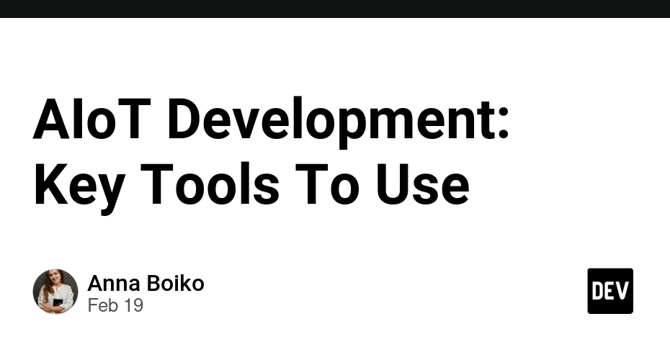Dev
1M
121

Image Credit: Dev
AIoT Development: Key Tools To Use
- AIoT, the combination of AI and IoT, shows great potential for innovative solutions across all domains.
- AI empowers IoT devices to make autonomous decisions, support decision-making, recognize patterns, manage data efficiently, and enhance human interaction.
- AI's ability to forecast events based on data analysis makes IoT systems more proactive and impactful.
- To integrate AI into IoT effectively, steps include defining objectives, assessing data requirements, choosing AI tools, deciding on AI models, integration, testing, monitoring, and refining.
- Key tools for AIoT development include AI frameworks like TensorFlow and PyTorch, cloud platforms like AWS IoT Core + Amazon SageMaker and Microsoft Azure IoT Hub + Azure Machine Learning, and edge AI tools like NVIDIA Jetson and Intel OpenVINO.
- AIoT development requires sufficient data quality, appropriate AI tools, and a well-structured approach to achieve successful integration.
- The use of AI frameworks, cloud platforms, and edge AI tools enables developers to create reliable and scalable AIoT systems for various applications.
- AI's role in IoT development is crucial for enhancing autonomy, efficiency, and effectiveness in solving complex problems.
- Successful AIoT development involves understanding machine learning's role, selecting the right tech stack, and utilizing tools for efficient data processing and analysis.
- By combining AI, IoT, and appropriate tools, businesses can create powerful AIoT solutions that offer flexibility, efficiency, and future-proof capabilities.
- Understanding the importance of AI in IoT and selecting the right AI tools are essential steps for building successful AIoT solutions.
Read Full Article
7 Likes
For uninterrupted reading, download the app